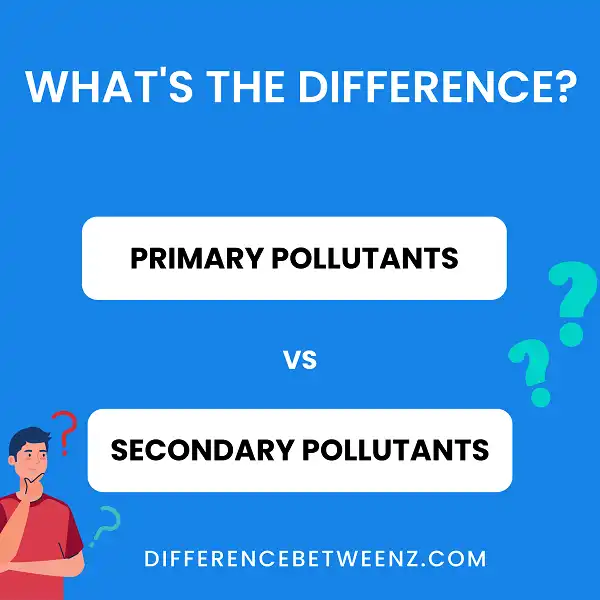In general, pollutants can be classified into two categories: primary and secondary. Primary pollutants are emitted directly from sources such as factories, vehicles, or fires. Secondary pollutants form when primary pollutants react with other chemicals in the atmosphere. Some examples of secondary pollutants include ozone and smog.
Ozone forms when sunlight triggers a reaction between nitrogen oxides and volatile organic compounds (VOCs). Smog is a mixture of ground-level ozone and particulate matter. Both ozone and smog can cause serious health problems, so it’s important to understand the difference between primary and secondary pollutants.
What are Primary Pollutants?
- Primary pollutants are pollutants that are emitted directly into the atmosphere. These pollutants can come from a variety of sources, including factories, power plants, cars, and cigarettes. Primary pollutants can be either man-made or natural.
- Examples of man-made primary pollutants include carbon monoxide, sulfur dioxide, and nitrogen oxides. Natural primary pollutants include smoke, dust, and pollen. Primary pollutants can have a variety of adverse health effects, including respiratory problems and heart disease.
- In addition, primary pollutants can contribute to the formation of secondary pollutants, which can have an even greater impact on human health. Therefore, it is important to take steps to reduce the emission of primary pollutants in order to protect public health.
What are Secondary Pollutants?
- Secondary pollutants are those that are not emitted directly. Instead, they form in the atmosphere when primary pollutants react or interact. Ozone, for example, is a secondary pollutant that is created when emissions from automobiles and industrial facilities combine in the presence of sunlight.
- Secondary pollutants can also be produced by natural sources, such as forest fires. While Secondary pollutants are often less abundant than primary pollutants, they can be far more dangerous to human health. This is because they are often present at higher concentrations closer to the ground, where people breathe them in.
- Additionally, Secondary pollutants can have a longer lifespan than primary pollutants, meaning that they can linger in the atmosphere and cause problems even after the original emissions have stopped. As a result, it is important to understand both primary and Secondary pollutants in order to safeguard public health.
Difference between Primary Pollutants and Secondary Pollutants
- Primary pollutants are emissions from sources that pollute the air directly. These include emissions from vehicles, industrial facilities, and agricultural activities. Primary pollutants can also come from natural sources, such as volcanoes and forest fires.
- Secondary pollutants are pollutants that are not emitted directly into the air but are formed when primary pollutants react with each other in the atmosphere. For example, ground-level ozone is a secondary pollutant that is formed when primary pollutants emitted by cars and trucks interact with each other in the presence of sunlight.
- Ozone can cause a variety of respiratory problems, including coughing, chest pain, and shortness of breath. It can also aggravate asthma and other lung diseases. Ground-level ozone is a particular concern for children, the elderly, and people who are active outdoors.
Conclusion
While both types of pollutants are harmful, secondary pollutants are especially dangerous because they can form from a variety of different sources. It’s important to be able to identify these pollutants and take steps to reduce them in our environment. Hopefully, this article has helped you understand the difference between primary and secondary pollutants and given you some ideas about how you can help make your community a healthier place.


